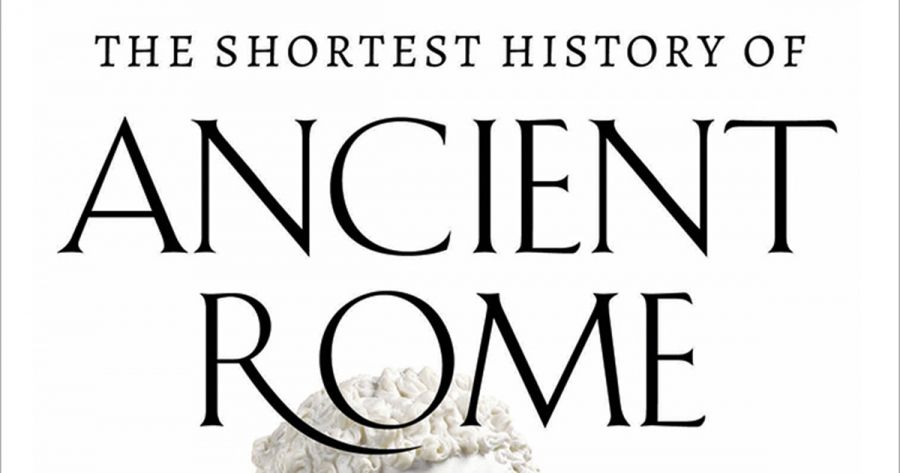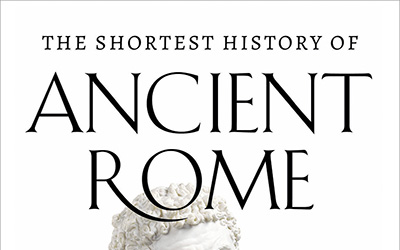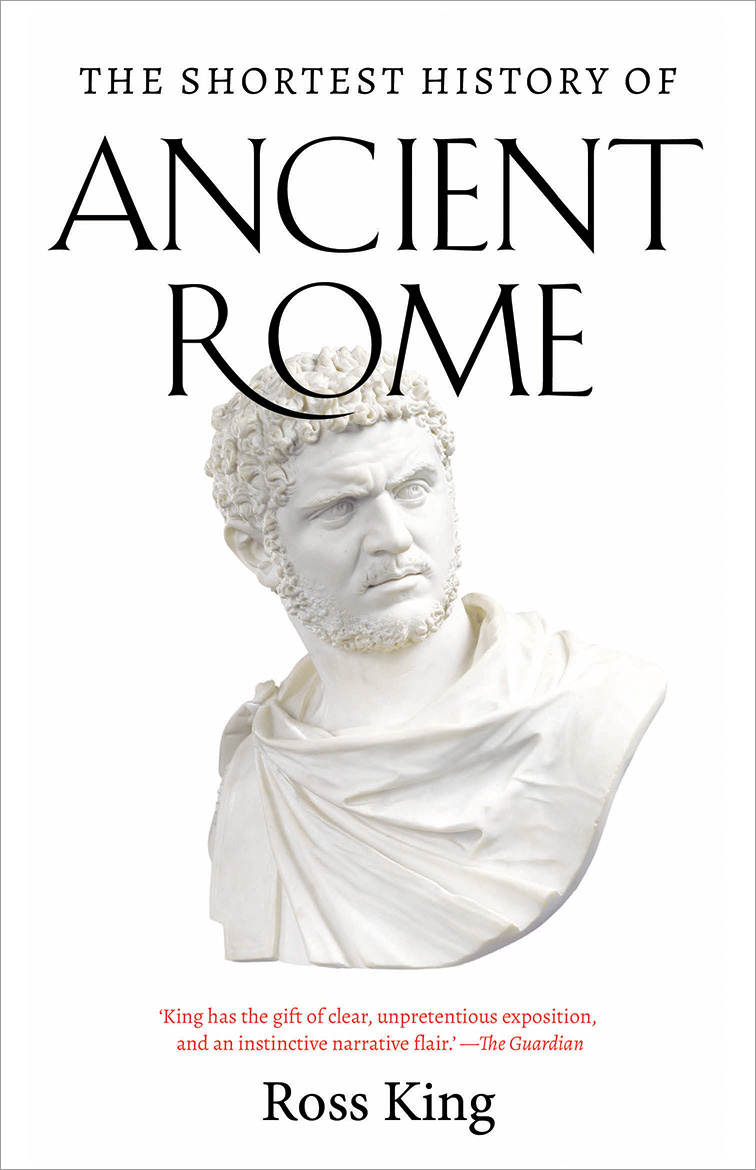
- Free Article: No
- Contents Category: History
- Review Article: Yes
- Article Title: Caligula’s blanket
- Article Subtitle: Excursuses into Rome
- Online Only: No
- Custom Highlight Text:
In September 2023, ancient Rome became the focus of a viral social media trend. Women were encouraged to ask men how often they thought about the Roman Empire. The results were emphatic. It became apparent that many men thought about the Roman Empire frequently. The enduring fascination with the Romans should not be surprising; they continue to have an impact on our lives every day.
- Featured Image (400px * 250px):

- Alt Tag (Featured Image): Kyriakos Velos reviews ‘The Shortest History of Ancient Rome’ by Ross King
- Book 1 Title: The Shortest History of Ancient Rome
- Book 1 Biblio: Black Inc., $27.99 pb, 272 pp
- Book 1 Cover Small (400 x 600):

- Book 1 Cover (800 x 1200):

- Book 1 Readings Link: https://www.readings.com.au/product/9781760644437/the-shortest-history-of-ancient-rome--ross-king--2024--9781760644437#rac:jokjjzr6ly9m
The majority of the book, however, is dedicated to an account of Rome’s history until the fall of the Western Roman Empire in 476 CE. King begins with Rome’s foundation and subsequent transformation from a monarchy into a fledgling republic. While it is proverbial knowledge that Rome was not built in a day, it is less well known that the settlement took centuries to develop into its recognisable form. The story of its establishment has become inextricably bound with the fratricidal Romulus and his twin (and victim) Remus, who supposedly founded the city in 753 BCE. King adduces archaeological evidence to demonstrate that the situation was significantly more complex than the myths suggest. Excavations have demonstrated that several permanent settlements predating the legendary foundation existed on the hills of Rome before they eventually amalgamated later in the millennium.
In large part, the story of the Roman Republic and Roman Empire is told through a cavalcade of figures whose actions shaped and shook Rome over this period: Hannibal, Pompey, Julius Caesar, Octavian/Augustus, Caligula, Nero, Hadrian, Marcus Aurelius, and Constantine all feature prominently. King brings these individuals to life with a series of anecdotes that might be unknown to his readers. For instance, even a person acquainted with Augustus’s political exploits may be surprised to learn that the first emperor composed a sizeable literary corpus, including a collection of epigrams that he mostly wrote while in the bath.
Several anecdotes function as launching points for excursuses into cultural and social elements of Rome. Reference to Julius Caesar’s alleged youthful dalliance with the Bithynian monarch, Nicomedes IV, permits King to outline sexual roles in Roman society. Similarly, a description of Agrippina the Younger’s machinations and her tumultuous relationship with her son, Nero, is followed by a foray into the standing of women in Rome.
The architectural accomplishments of the Romans are also given attention. A sizeable portion of the book is dedicated to the construction and the significance of major buildings like the Colosseum and the Pantheon. For readers who are familiar only with the political upheavals and wars of Rome, these digressions serve to flesh out Rome as a society.
Having drawn his narrative largely from textual sources, King observes prudently that caution must be exercised when using these ancient accounts, especially the most lurid tales, as evidence. Occasionally, the author seems to disregard his own advice when presenting the most sensational version of events uncritically. King claims that Tiberius was smothered under a pile of blankets by his successor, Caligula. Although Suetonius acknowledges that Caligula was rumoured to have assassinated his predecessor, he also includes more mundane, alternate versions of Tiberius’s death, in which the septuagenarian emperor – who had far surpassed the average life expectancy – died of natural causes.
Some historical errors also appear. Despite informing his readers that the Romans had razed Carthage in 146 BCE, King states four pages later that Cato the Elder had lived to see the destruction of Carthage by the time of his death in 149 BCE. Furthermore, Pompey is described as entering into a second marriage after the death of his previous wife, Julia. In fact, this was Pompey’s fifth – and final – matrimonial union. Julia, who had been his fourth wife, was roughly the same age as several of Pompey’s children from his third marriage.
Given the conciseness of this volume and the breadth of the subject, the author was inevitably selective in what he presented. Some narrative choices, however, have rendered the book unbalanced. While the 260-year period from Julius Caesar’s assassination in 44 BCE until the murder of Caracalla in 217 CE has nearly 120 pages dedicated to it, the subsequent 259 years of Roman history are covered in thirty-four pages. Accordingly, in contrast to the attention lavished on the Julio-Claudian and Nerva-Antonine dynasties, the history of the Late Roman Empire feels like an elliptical afterthought. Among the major historical events overlooked is the consequential decision to divide the empire between the two sons of Theodosius I, the last emperor of the united realm, upon his death in 395 CE. This split between the eastern and western halves had ramifications that endure until the present: the division of Europe between Eastern and Western Christianity has largely adhered to these borders. Readers wanting more details about the Late Roman Empire might be left pondering that if brevity is the soul of wit, it can be the bane of historiography.


Comments powered by CComment